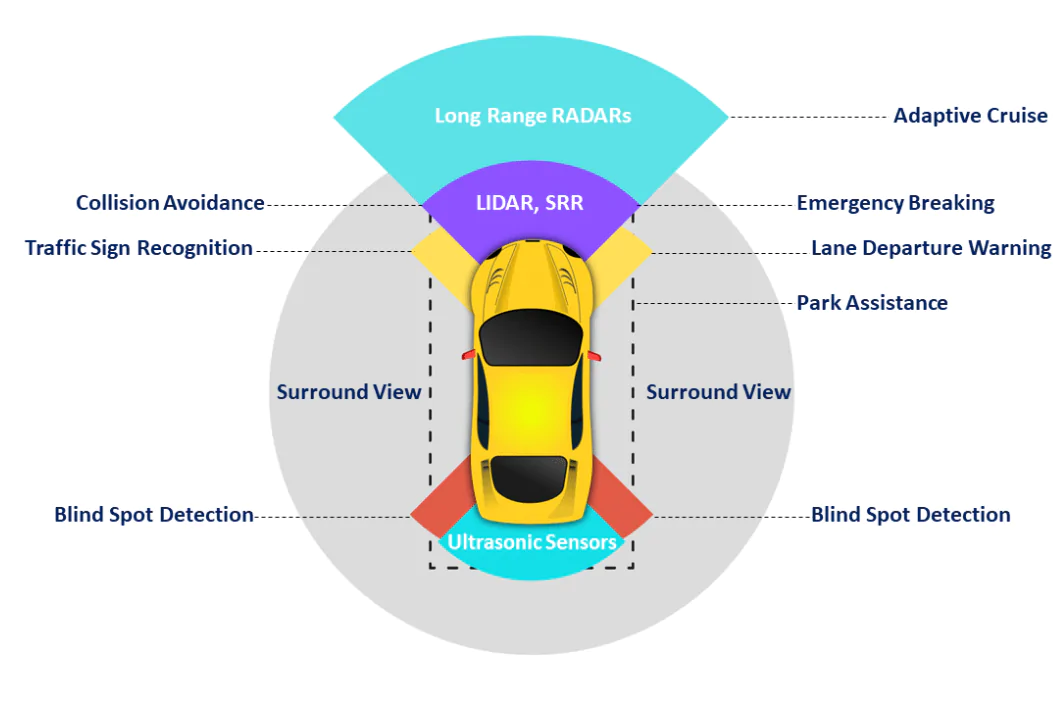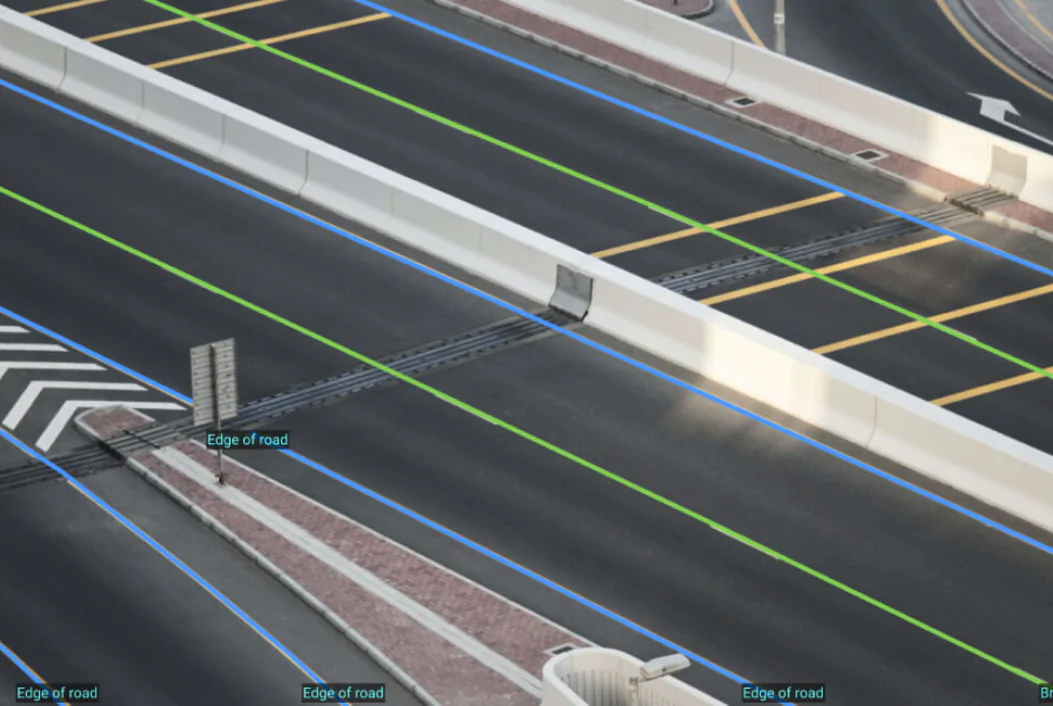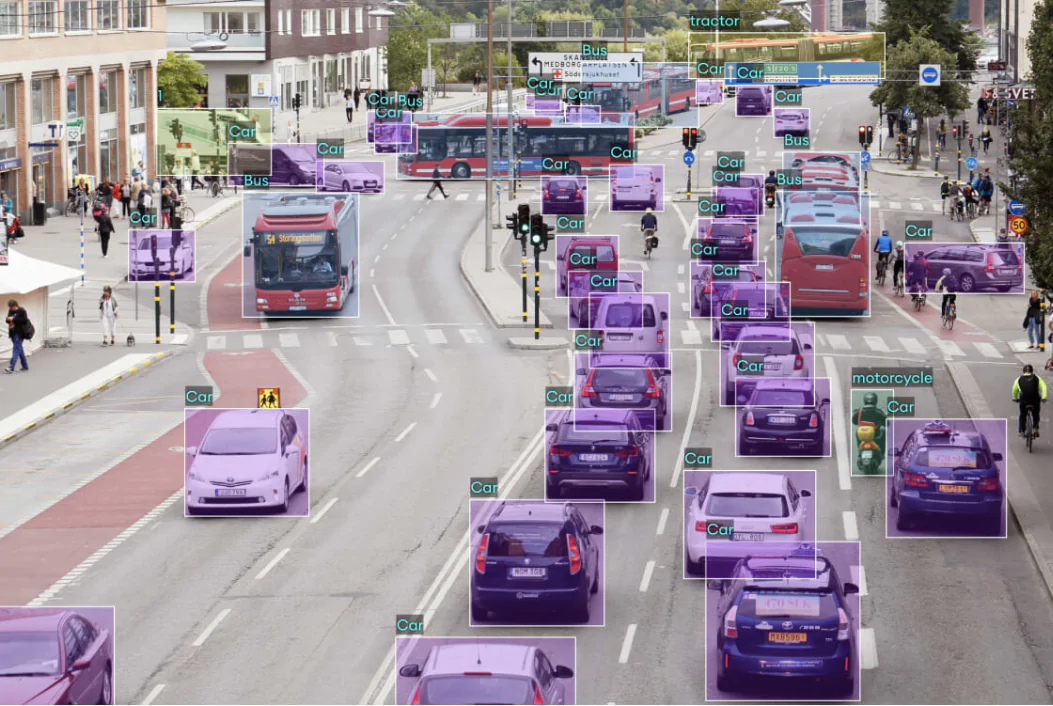Introduction
Computer vision is a field of artificial intelligence that enables machines to interpret and understand visual information from the environment. On the other hand, self-driving cars, also known as autonomous vehicles, are vehicles capable of navigating and operating without human intervention. The intersection of computer vision and self-driving cars is revolutionizing the automotive industry by enhancing safety, efficiency, and convenience.
Main Objective of Computer Vision
Computer vision’s main goal is to give machines the ability to “see” and interpret the visual environment in a manner similar to that of humans, which includes object recognition, pattern recognition, feature detection, and decision-making based on received data. This technology is used in a wide range of industries, including robotics, automotive, healthcare, surveillance, entertainment, and more. These industries rely on the ability to interpret visual data for tasks like object recognition, image segmentation, classification, and even autonomous navigation in self-driving cars. The field of computer vision is revolutionizing many aspects of modern technology and society as it develops.
Importance of computer vision in the automotive sector
The automotive industry has made significant advancements in computer vision due to its substantial importance. Computer vision technology is essential to autonomous cars and advanced driver assistance systems (ADAS). It improves driving efficiency, increases vehicle safety, and offers a better overall user experience. The automotive industry places great importance on computer vision for the following main reasons:
- Improved Vehicle Safety: Thanks to computer vision, cars can now “see” their environment and identify possible threats instantly. Computer vision systems can recognize and track objects like cyclists, pedestrians, cars, and roadblocks by evaluating data from cameras, LiDAR, and radar sensors. This capability lowers the risk of accidents and improves overall road safety by enabling the use of life-saving features like automated emergency braking, lane departure warnings, and collision avoidance.
- Enhanced Driving Efficiency: Vehicles can optimize their driving behavior to use less fuel and emit fewer emissions when they use computer vision. Computer vision systems have the capability to examine traffic patterns and make necessary adjustments to speed, acceleration, and deceleration in order to reduce fuel consumption and improve overall driving efficiency.
- Capabilities for Autonomous Driving: A key technology in the development of self-driving or autonomous cars is computer vision. Without human assistance, it gives vehicles the perception abilities they need to navigate and function safely. Autonomous vehicles are able to make well-informed decisions about their movements and modify their behavior as a result of computer vision algorithms’ ability to interpret complex visual data, such as traffic signs, lane markings, traffic lights, and road conditions.
- User Experience and Comfort: By offering features like driver monitoring systems (DMS), computer vision technologies improve driving as a whole. By monitoring a driver’s attentiveness and identifying indicators of fatigue or distraction, DMS can encourage safer driving behaviors.
The Role of Computer Vision in Sensor Technology

-
Cameras for Object Detection:
-
Cameras are a fundamental component of self-driving cars, providing real-time visual data for object detection, lane tracking, and traffic sign recognition.
-
-
Lidar for Depth Perception:
-
Lidar (Light Detection and Ranging) uses laser pulses to measure distance and create detailed 3D maps of the surroundings, crucial for accurate object detection and obstacle avoidance.
-
-
Radar for Speed and Distance Measurement:
-
Radar sensors use radio waves to detect the speed and distance of objects, complementing cameras and lidar for a comprehensive view of the environment.
-
Machine Learning Algorithms for Computer Vision in Self-Driving Cars
-
Convolutional Neural Networks for Image Recognition:
-
Convolutional Neural Networks (CNNs) are widely used for image recognition in self-driving cars, enabling them to identify objects, pedestrians, and road signs.
-
-
Recurrent Neural Networks for Prediction and Decision Making:
-
Recurrent Neural Networks (RNNs) help self-driving cars make predictions based on sequential data, such as tracking the movement of other vehicles and anticipating traffic patterns.
-
-
Support Vector Machines for Anomaly Detection:
-
Support Vector Machines (SVMs) are utilized for anomaly detection in self-driving cars, identifying unusual behaviors or objects that may pose a threat to safety.
-
The advancement of autonomous vehicles through computer vision
It goes without saying how computer vision technology has advanced self-driving vehicle technology, even with the aforementioned challenges. Let’s focus on a few of the most important advancements.
3D Maps
Since cameras in autonomous vehicles are capable of taking pictures in real time, a 3D map is made from those same pictures. Autonomous vehicle technology can ensure a safer driving experience by utilizing 3D maps to better understand the driving spaces.
Lane line detection

Cutting lanes is one of the trickiest parts of driving a self-driving car since a mistake could quickly result in an accident. Combining segmentation techniques with deep learning models allows computer vision to recognize lines and curves without the need for human or driver intervention.
Disposal of airbags
Thanks to computer vision technology, information from other cars that are in close proximity to a self-driving car is constantly decoded, allowing for the anticipation of potential collisions or incidents and the timely deployment of airbags to protect occupants.
Operating a vehicle in low light
An autonomous vehicle must switch between normal and low light modes because the route and time of day affect the lighting. Low light conditions can be detected by computer vision algorithms, which can then adapt by using LIDAR and HDR sensors, FMCW radars, and other technologies.
Computer vision challenges in autonomous vehicles

When companies started testing autonomous vehicles, many challenges emerged for computer vision in them, Some of them are as follows:
- Gathering the training data: The collection of training datasets poses a significant obstacle for self-driving cars driven by artificial intelligence.
- Data labeling: Data labelling, a labor-intensive manual process. Data labelling relies heavily on human labor to locate unlabeled elements in raw images and classify them, especially for datasets as large as self-driving cars.
- Object detection for autonomous vehicles: Computer vision is used by self-driving cars to identify objects. In turn, object detection requires two stages: localization and image classification.
- Pedestrians: While autonomous cars are expected to recognise pedestrians, they should also be able to estimate the pedestrian’s expected movements and posture when crossing the street. This presents another challenge: an autonomous vehicle needs to be faster and more efficient at picking up moving pedestrians in addition to static objects.
- Stereovision: Depth estimation is necessary to guarantee both the vehicle’s and the passengers’ safety. Stereo vision is useful in supporting several other tools, such as LIDAR and camera radar, even though they play important roles.
- Semantic segmentation and instance segmentation: Autonomous vehicles face distinct challenges when it comes to semantic and instance segmentation. Semantic instance segmentation illustrates the differences between the labelled objects (car1, car2, car3), whereas semantic segmentation labels each object in an image (truck, van). The distinction between the two is frequently unclear.
Limitations of Computer Vision in Self-Driving Cars
-
Adverse Weather Conditions:
-
Computer vision systems may struggle in adverse weather conditions like heavy rain, snow, or fog, reducing visibility and affecting sensor accuracy.
-
-
Complex Urban Environments:
-
Navigating through busy urban environments with complex road structures, unpredictable pedestrian behavior, and challenging traffic scenarios poses a significant challenge for self-driving cars.
-
-
Legal and Ethical Considerations:
-
The implementation of self-driving cars raises legal and ethical considerations regarding liability, privacy, and decision-making algorithms in critical situations.
-
Future Outlook of Computer Vision in Self-Driving Cars
-
Enhanced Safety Features:
-
Advances in computer vision technology will lead to enhanced safety features in self-driving cars, reducing accidents and increasing road safety for all users.
-
-
Improved Traffic Management:
-
Self-driving cars equipped with computer vision systems can optimize traffic flow, reduce congestion, and minimize emissions by efficiently coordinating their movements.
-
-
Potential for Fully Autonomous Vehicles:
-
With ongoing developments in computer vision and artificial intelligence, the future holds the promise of fully autonomous vehicles that can operate seamlessly on roads without human intervention.
-
Conclusion
In conclusion, computer vision plays a critical role in the development and advancement of self-driving cars by enabling them to navigate and operate safely in diverse environments. Despite the challenges and limitations, the ongoing progress in sensor technology and machine learning algorithms is paving the way for a future with smarter and more autonomous vehicles. By addressing key issues and harnessing the potential of computer vision, the automotive industry is on the path to revolutionizing transportation as we know it.
Learn about more AI tools and Blogs.
FAQs
How does computer vision improve safety in self-driving cars?
Improvement in Safety: Computer vision enhances safety in self-driving cars by enabling them to detect and recognize objects, pedestrians, road signs, and other vehicles in their surroundings. This helps the car make informed decisions to avoid collisions and navigate safely.
What are the main sensors used in self-driving cars for computer vision?
Main Sensors: The main sensors used in self-driving cars for computer vision include:
- Cameras: Capture visual data from the car’s surroundings.
- LiDAR (Light Detection and Ranging): Measures distances by illuminating targets with laser light and analyzing the reflected light.
- Radar: Uses radio waves to detect objects and their velocities.
What are the biggest challenges facing the implementation of computer vision in self-driving cars?
Challenges:
- Adverse Weather Conditions: Computer vision systems can struggle in adverse weather conditions like rain, fog, or snow, reducing their effectiveness.
- Complex Environments: Identifying and interpreting various objects and scenarios in complex urban environments with a high degree of accuracy remains challenging.
- Real-time Processing: Processing large amounts of visual data in real-time to make split-second decisions requires significant computational power and efficiency.
- Safety and Reliability: Ensuring that computer vision systems operate reliably and safely under all circumstances is critical for widespread adoption.
- Regulatory and Legal Issues: Establishing regulations and addressing liability concerns related to self-driving cars equipped with computer vision systems pose additional challenges.



Thank you for your response! I’m grateful for your willingness to engage in discussions. If there’s anything specific you’d like to explore or if you have any questions, please feel free to share them. Whether it’s about emerging trends in technology, recent breakthroughs in science, intriguing literary analyses, or any other topic, I’m here to assist you. Just let me know how I can be of help, and I’ll do my best to provide valuable insights and information!
Your blog is a constant source of inspiration for me. Your passion for your subject matter shines through in every post, and it’s clear that you genuinely care about making a positive impact on your readers.
Wow, incredible weblog format! How long have you ever been blogging for?
you made blogging glance easy. The total look of your website is magnificent, let alone the
content! You can see similar here najlepszy sklep
geinoutime.com
Liu Jin은 씁쓸한 얼굴로 “폐하가 격노하여 대부에게 즉시 궁전에 들어가라고 명령했습니다. “라고 말했습니다.
geinoutime.com
“아.” Zhang Yanling이 “형님, 머리가 아파요.”